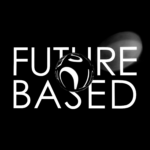Podcast: Play in new window | Download
Subscribe: Spotify | Podchaser | Email | TuneIn | RSS | More
This podcast with Roland van Dierendonck head of the BioHack Academy of Waag is recorded for festival Onzichtbaar Landschap.
Together with his colleague Inger le Gué, Roland is presenting Wetlab in the Wild at the Festival ‘Onzichtbaar Landschap’. In this laboratory you will get the chance to discover the secrets of the surroundings of the festival. Through collected samples from the environment and using the microscope, we can see what is not visible to the naked eye. Photographs from research will create a map that makes an overview of the landscape at microscopic level.
Everything around us is part of an ecosystem: the earth, the forests, but also plants are part of the system that sustains life on earth. Plants make oxygen and are food for humans and animals. They are also one of the few living organisms that can make their own food from air and light. Leafy green granules are a crucial part of this and also cause the green color of leaves. With the help of microscopy and do-it-yourself coloring methods, we can expose the cell structures of plants. – Waag
Science is focused on new knowledge, while art allows for speculative scenarios: At the Open Wetlab it is special that Bio Art actually works, with living material in the lab. This allows you to speculate about scenarios that are rooted in material truth. So why is this combination, such as in bio-art and technology, so valuable? Why is interdisciplinary thinking between art, science, technology and biology so important?
Festival Onzichtbaar landschap is a project of Scarabee, Foundation for art and landscape.
